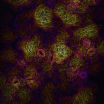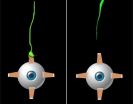(Press-News.org) This news release is available in German.
Children who have been conceived during a severe epidemic are more resistant against other pathogens later in life. For the first time this has been proved by researchers at the Max Planck Institute for Demographic Research (MPIDR) in Rostock, Germany, for the 18th century epidemics of measles and smallpox in the Canadian province of Québec. Children who were conceived during the wave of measles in 1714 and 1715 died significantly less often from smallpox 15 years later than children who had been conceived before the measles epidemic. This is the result of a study published in the scientific journal PLOS ONE by Max Planck researcher Kai Willführ and Mikko Myrskylä from the London School of Economics and Political Science.
"We have proved that parents can essentially prepare their children for future diseases," says bio-demographer Willführ. "The underlying mechanism is not purely genetic, nor is the children's resistance restricted to single pathogens." Scientists call such a transfer a "functional trans-generational effect." Parents who faced an increased disease load during conception not only gave their children protection against this one infection, but the defence against pathogens apparently also worked better in the next generation against different illnesses like smallpox.
The moment of conception was critical for life or death for many children during the 1730 smallpox epidemic. The probability of dying from smallpox had dropped to less than 15 percent for children conceived during the measles epidemic in 1714 and 1715 compared to their brothers or sisters who had been conceived and born before the measles epidemic. But there was a high price to pay. Those children who were so resistant to smallpox survived the later epidemic with greater probability. But during the time between the two waves of epidemics, their mortality was three times that of their siblings who had been conceived before the earlier measles epidemic and thus were less resistant to smallpox.
"The way children's bodies fight diseases seems to be optimized for a world with high pathogen load if it was also high at conception," says MPIDR researcher Kai Willführ. But the children's resistance does not fit into a world with fewer pathogens and works less well under normal circumstances.
"It was only during conception and pregnancy that measles could have given an advantage that parents passed on to the next generation," says Kai Willführ. When the children conceived at the peak of the measles epidemic were born, the measles epidemic had already passed; the pathogens were no longer in the environment. It can be ruled out that children simply became immune. In principle it is possible for a mother to pass her antibodies, and thus immunity, to her baby. This happens through the placenta during pregnancy and through breast milk after birth. But this protection is limited to the same illness the mother had immunity against. In Québec this would have been measles. However, in this study the researchers found that the children were also resistant against another disease, namely smallpox. For the first time, the scientists could separate the mortality effects of the different diseases, because they traced the life course of each child individually and of their siblings. For their study they investigated birth cohorts from 1705 to 1724 and their mortality until the year 1740. They achieved data about births and deaths from transcriptions of old church registers of the historical population of the St. Lawrence River valley in the Canadian province of Québec.
INFORMATION:
Kai Willführ, Mikko Myrskylä:
Disease Load at Conception Predicts Survival in Later Epidemics in a Historical French-Canadian Cohort, Suggesting Functional Trans-Generational Effects in Humans
in: PLOS ONE, online advance publication April 16
High disease load reduces mortality of children
Trans-generational defense mechanism in humans proved
2014-04-17
ELSE PRESS RELEASES FROM THIS DATE:
Declining catch rates in Caribbean green turtle fishery may be result of overfishing
2014-04-17
A 20-year assessment of Nicaragua's legal, artisanal green sea turtle fishery has uncovered a stark reality: greatly reduced overall catch rates of turtles in what may have become an unsustainable take, according to conservation scientists from the Wildlife Conservation Society and University of Florida.
During the research period, conservation scientists estimated that more than 170,000 green turtles were killed between 1991 and 2011, with catch rates peaking in 1997 and 2002 and declining steeply after 2008, likely resulting from over-fishing. The trend in catch rates, ...
In old age, lack of emotion and interest may signal your brain is shrinking
2014-04-16
MINNEAPOLIS – Older people who have apathy but not depression may have smaller brain volumes than those without apathy, according to a new study published in the April 16, 2014, online issue of Neurology®, the medical journal of the American Academy of Neurology. Apathy is a lack of interest or emotion.
"Just as signs of memory loss may signal brain changes related to brain disease, apathy may indicate underlying changes," said Lenore J. Launer, PhD, with the National Institute on Aging at the National Institutes of Health (NIH) in Bethesda, MD, and a member of the American ...
Dermatologists with access to sample drugs write costlier prescriptions, Stanford study finds
2014-04-16
STANFORD, Calif. — Dermatologists with access to free drug samples are more likely than those without access to samples to write prescriptions for drugs that are more expensive, according to a study by researchers at the Stanford University School of Medicine.
Although studies have shown that most physicians do not believe that the availability of free samples affects their behavior or recommendations for patients, the researchers found that the average retail cost of the prescriptions written by dermatologists with access to samples are about twice the cost of prescriptions ...
Free drug samples can change prescribing habits of dermatologists
2014-04-16
The availability of free medication samples in dermatology offices appears to change prescribing practices for acne, a common condition for which free samples are often available.
Free drug samples provided by pharmaceutical companies are widely available in dermatology practices.
The authors investigated prescribing practices for acne vulgaris and rosacea. Data for the study were obtained from a nationally representative sample of dermatologists in the National Disease and Therapeutic Index (NDTI), a survey of office-based U.S. physicians, and from an academic medical ...
Atypical brain connectivity associated with autism spectrum disorder
2014-04-16
Autism spectrum disorder (ASD) in adolescents appears to be associated with atypical connectivity in the brain involving the systems that help people infer what others are thinking and understand the meaning of others' actions and emotions.
The ability to navigate and thrive in complex social systems is commonly impaired in ASD, a neurodevelopmental disorder affecting as many as 1 in 88 children.
The authors used functional magnetic resonance imaging to investigate connectivity in two brain networks involved in social processing: theory of mind (ToM, otherwise known ...
For cells, internal stress leads to unique shapes
2014-04-16
From far away, the top of a leaf looks like one seamless surface; however, up close, that smooth exterior is actually made up of a patchwork of cells in a variety of shapes and sizes. Interested in how these cells individually take on their own unique forms, Caltech biologist Elliot Meyerowitz, postdoctoral scholar Arun Sampathkumar, and colleagues sought to pinpoint the shape-controlling factors in pavement cells, which are puzzle-piece-shaped epithelial cells found on the leaves of flowering plants. They found that these unusual shapes were the cell's response to mechanical ...
Researchers track down cause of eye mobility disorder
2014-04-16
Imagine you cannot move your eyes up, and you cannot lift your upper eyelid. You walk through life with your head tilted upward so that your eyes look straight when they are rolled down in the eye socket. Obviously, such a condition should be corrected to allow people a normal position of their head. In order to correct this condition, one would need to understand why this happens.
In a paper published in the April 16 print issue of the journal Neuron, University of Iowa researchers Bernd Fritzsch and Jeremy Duncan and their colleagues at Harvard Medical School, along ...
Scientists observe quantum superconductor-metal transition and superconducting glass
2014-04-16
The article "Collapse of superconductivity in a hybrid tin–grapheme Josephson junction array'" (authors: Zheng Han, Adrien Allain, Hadi Arjmandi-Tash,Konstantin Tikhonov, Mikhail Feigelman, Benjamin Sacépé,Vincent Bouchiat, published in Nature Physics on March 30, 2014, DOI:10.1038/NPHYS2929) presents the results of the first experimental study of the graphene-based quantum phase transition of the "superconductor-to-metal" type, i.e. transformation of the system's ground state from superconducting to metallic, upon changing the electron concentration in graphene sheet.
The ...
Stanford scientists develop 'playbook' for reverse engineering tissue
2014-04-16
STANFORD, Calif. — Consider the marvel of the embryo. It begins as a glob of identical cells that change shape and function as they multiply to become the cells of our lungs, muscles, nerves and all the other specialized tissues of the body.
Now, in a feat of reverse tissue engineering, Stanford University researchers have begun to unravel the complex genetic coding that allows embryonic cells to proliferate and transform into all of the specialized cells that perform myriad biological tasks.
A team of interdisciplinary researchers took lung cells from the embryos of ...
Red moon at night; stargazer's delight
2014-04-16
Monday night's lunar eclipse proved just as delightful as expected to those able to view it. On the East Coast, cloudy skies may have gotten in the way, but at the National Science Foundation's National Optical Astronomy Observatory (NOAO) near Tucson, Ariz., the skies offered impressive viewing, as seen from the pictures provided here.
Nicknamed a "blood moon," this lunar eclipse's color was similar to the majority of lunar eclipses. This has to do with the Earth's atmosphere's propensity for longer-wavelength light (e.g., the reds, oranges and yellows seen in sunrises ...
LAST 30 PRESS RELEASES:
When thoughts flow in one direction
Scientists identify airway cells that sense aspirated water and acid reflux
China’s major cities show considerable subsidence from human activities
Drugs of abuse alter neuronal signaling to reprioritize use over innate needs
Mess is best: disordered structure of battery-like devices improves performance
Skyrmions move at record speeds: a step towards the computing of the future
A third of China’s urban population at risk of city sinking, new satellite data shows
International experts issue renewed call for Global Plastics Treaty to be grounded in robust science
Novel material supercharges innovation in electrostatic energy storage
A common pathway in the brain that enables addictive drugs to hijack natural reward processing has been identified by Mount Sinai
China’s sinking cities indicate global-scale problem, Virginia Tech researcher says
Study finds potential new treatment path for lasting Lyme disease symptoms
Metabolic health before vaccination determines effectiveness of anti-flu response
Department of Energy announces $16 million for traineeships in accelerator science & engineering
MRE 2024 Publication of Enduring Significance Awards
UCalgary researchers quantify the connection between homelessness and mental health disorders
Fourteen years after the Gulf of Mexico oil spill, endemic fishes face an uncertain future
For more open and equitable public discussions on social media, try “meronymity”
Marine microbial populations: Potential sensors of the global change in the ocean
Metacognitive abilities like reading the emotions and attitudes of others may be more influenced by environment than genetics
Salk Professor Satchin Panda named 2023 AAAS fellow
New urine test has higher diagnostic accuracy for prostate cancer
Floating solar’s potential to support sustainable development by addressing climate, water, and energy goals holistically
Drawing a line back to the origin of life
Data-driven music: Converting climate measurements into music
Palaeontology: Discovery of new ancient giant snake in India
Racial discrimination and metabolic syndrome in young Black adults
Adherence to American Cancer Society nutrition and physical activity guidelines among cancer survivors
New urine-based test detects high-grade prostate cancer, helping men avoid unnecessary biopsies
Researchers reduce bias in pathology AI algorithms using foundation models
[Press-News.org] High disease load reduces mortality of childrenTrans-generational defense mechanism in humans proved



